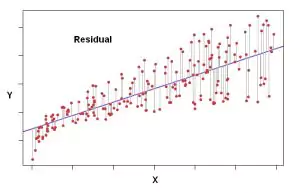Statistics plays a crucial role in data analysis, helping us understand and interpret data through mathematical principles. One key concept in statistics is the X-Bar, symbolized as “x̄”. This article aims to provide a comprehensive understanding of X-Bar, how it’s used, and its significance in statistics.

✅ AI Essay Writer ✅ AI Detector ✅ Plagchecker ✅ Paraphraser
✅ Summarizer ✅ Citation Generator
Understanding the Basics
X-Bar, which is represented as x̄, is a term used in statistics to describe the sample mean of a data set. It is a point estimate of the population mean, denoted as “Mu”. The X-Bar is the average of all values in a sample, which is a subset of the population. Calculating the sample mean is a common practice in statistic assignment help, providing an estimation of the central tendency.
There’s a distinction between X-Bar and Mu (the population mean). X-Bar is the mean of a sample, while Mu represents the mean of the entire population. In practice, it’s often impossible to collect data for the whole population, and thus a sample is used as a practical representation.
When analyzing data, it’s essential to understand the relationship between:
- the mean
- sample
- and population.
The mean represents the central tendency, which is a summary measure that attempts to describe a whole data set with a single value that represents the centre of its distribution. The sample is a subset of the population, and the X-Bar is an estimate of the population mean.
Formula for X-Bar
The formula for X-Bar is simple and is key to calculating the sample mean. The formula is: X̄ = (Σx) / n, where X̄ is the sample mean, Σx is the sum of all the sample observations, and n is the number of observations in the sample. This formula is a practical tool for summarizing a sample data set.
Application in Grouped and Ungrouped Data
Grouped Data
In statistics, sometimes data is categorized or binned for analysis, and this is known as grouped data. When dealing with grouped data, the X-Bar can be found by:
- taking the product of the midpoint of each class with the frequency of each class
- summing them up
- and dividing by the total number of observations.
Ungrouped Data
In contrast, ungrouped data are raw or individual data points. Here, the X-Bar is found using the formula mentioned earlier, by summing up all the individual data points and dividing by the number of observations.
Significance and Applications of X-Bar
X-Bar is a foundational concept in statistics, as it offers a point estimate for the population mean. This is especially important in inferential statistics, where conclusions about a population are drawn based on sample data. Some practical applications include:
- predicting future sales
- estimating average growth rates
- assessing performance measures.
Furthermore, X-Bar charts are often used in quality control processes.
Limitations and Considerations
While X-Bar is invaluable, it’s important to note that it is an estimate, and can differ from the population mean. The sample must be representative of the population for the X-Bar to be a good estimator. Moreover, X-Bar is sensitive to outliers, which can sometimes give a misleading representation of the central location. Additionally, if you’re delving into statistics, you might wonder, “what does mu stand for in Statistics?” Mu (μ) represents the population mean, which is the average value of a given population data set.
Conclusion
In summary, X-Bar represents the sample mean and is a crucial parameter in statistics. It serves as a point estimate of the population mean, which is central to both descriptive and inferential statistics. By understanding the application of X-Bar and its limitations, one can effectively utilize it as a tool for statistical data analysis and decision-making. As with any statistical measure, careful consideration and analysis are necessary to derive meaningful conclusions from data.
FAQ
What is the difference between X bar and mu?
X bar and mu are both measures of central tendency. However, while X bar represents the mean of a sample, mu represents the mean of the entire population. The sample is usually a subset of the population, and its mean (X bar) is often used as an estimate of the population mean (mu).
Why is X bar used as a sample mean?
X bar is used as the sample mean because it provides a practical and efficient method for summarizing the central tendency of a sample. Since it’s often impractical or impossible to collect data from an entire population, a sample and its mean (X bar) are used as representations of the population.
Can X bar be used as a point estimate for the population mean?
Yes, X bar is commonly used as a point estimate for the population mean. It provides an estimate of where the population mean is likely to be based on the sample data.
How do you calculate X bar for grouped data?
For grouped data, X bar can be found by taking the product of the midpoint of each class with the frequency of each class, summing them up, and dividing by the total number of observations.
What is the formula for finding X bar in statistics?
The formula for finding X bar in statistics is X̄ = (Σx) / n, where X̄ is the sample mean, Σx is the sum of all the sample observations, and n is the number of observations in the sample.
Are there any limitations to using X bar in data analysis?
Yes, while X bar is an effective tool for data analysis, it does have limitations. It’s important to remember that X bar is an estimate and may not perfectly represent the population mean. Additionally, X bar is sensitive to outliers, which can sometimes give a misleading representation of the central location.
What are the applications of X bar in statistical analysis?
X bar has a wide range of applications in statistical analysis. It’s used in inferential statistics, where conclusions about a population are drawn based on sample data. Some practical applications include predicting future sales, estimating average growth rates, and assessing performance measures. X-bar charts are also often used in quality control processes.
How does X bar relate to other measures of central tendency?
X bar is a type of average, similar to other measures of central tendency like the median and mode. All these measures aim to summarize a data set with a single value representing the center of its distribution. However, while the median and mode are less sensitive to outliers, X bar can be influenced significantly by extreme values.
Follow us on Reddit for more insights and updates.





Comments (0)
Welcome to A*Help comments!
We’re all about debate and discussion at A*Help.
We value the diverse opinions of users, so you may find points of view that you don’t agree with. And that’s cool. However, there are certain things we’re not OK with: attempts to manipulate our data in any way, for example, or the posting of discriminative, offensive, hateful, or disparaging material.